17.02.2018
International Journal of Diabetes & its Complications
http://www.scivisionpub.com/previous-display.php?journal=svdc&&v=2&&i=1&&y=2018&&m=February
José Palomar¹ and Maria Svet²
¹Orthopedic Surgeon, The author of the P-DTR method, President of P-DTR Global AG, Switzerland.
²Certified teacher of the P-DTR method, Member of the Board of P-DTR Global AG, Switzerland.
*Correspondence:
José Palomar, Orthopedic Surgeon, The author of the P-DTR method, President of P-DTR Global AG, Switzerland, E-mail: josepalomar@pdtr-global.com.
Received: 22 December 2017; Accepted: 26 January 2018
Citation: José Palomar, Maria Svet. Biomechanics and Neurology of Movements in Functional Training. Int J Diabetes Complications. 2018; 2(1): 1-7.
ABSTRACT
The paper discusses some characteristics of the science of human movement; it analyzes the movement rules, paying a special attention to the study of the neurological muscle health. In this work, we studied the features of playing sports by patients with physiological disadaptation.
Keywords
Movement, Biomechanics, Central nervous system, Neurological muscle health.
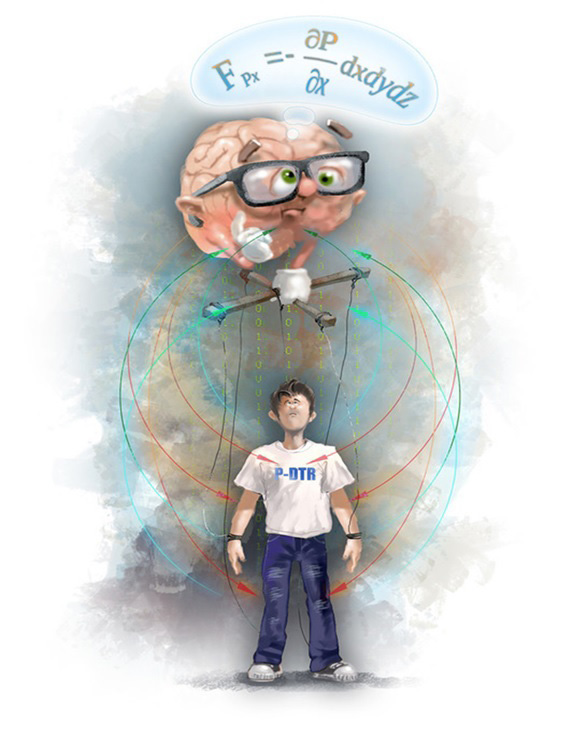 What is movement? Biomechanics. Rules of movements. What moves the muscles?
What is movement? Biomechanics. Rules of movements. What moves the muscles?
Biomechanics is a complex science, which includes varied knowledge of other sciences, such as mechanics and mathematics, functional anatomy and physiology, age anatomy and physiology, pedagogy, and theory of physical culture. However, to date, no systematic terminological study has been conducted on the term “biomechanics”.
The word “Biomechanics” means “movement of living organisms”. The great scientist N. A. Bernstein made a huge contribution to the science that studies movement and movement control by the brain (Figure 1).
In 1922, N.A. Bernstein was invited by A.K. Gastev to the Central Institute for Occupational Safety (CIOS). There, he founded and headed a biomechanics laboratory, where he studied movements during manual labor for the purpose of their optimization and increasing labor productivity. N.A. Bernstein improved the existent methods and developed new ones to register the labor motion parameters (kymocyclography, cyclogrammetry) using cameras with a high frequency of shooting, which allowed for a more detailed recording of the phases of a person’s movement. He created new analysis methods of experimental results with a subsequent mathematical processing of data; investigated the mechanisms of controlling the contraction of skeletal muscles, and laid the foundations of biomechanics. As early as by 1924, the scientist prepared an extensive work: “General Biomechanics”, which was published in 1926.
By the mid-1930, N.A. Bernstein developed and gave substance to such theoretical aspects of the concepts as “the circular motion control scheme”, “the principle of sensory corrections”, “repetition without repetition”, “the model of the required future”, “overcoming the excessive degrees of freedom”, “the principle of equal simplicity”, and others, which formed the core of his monograph “On the Synthesis of Motion”.
The scientists provided mater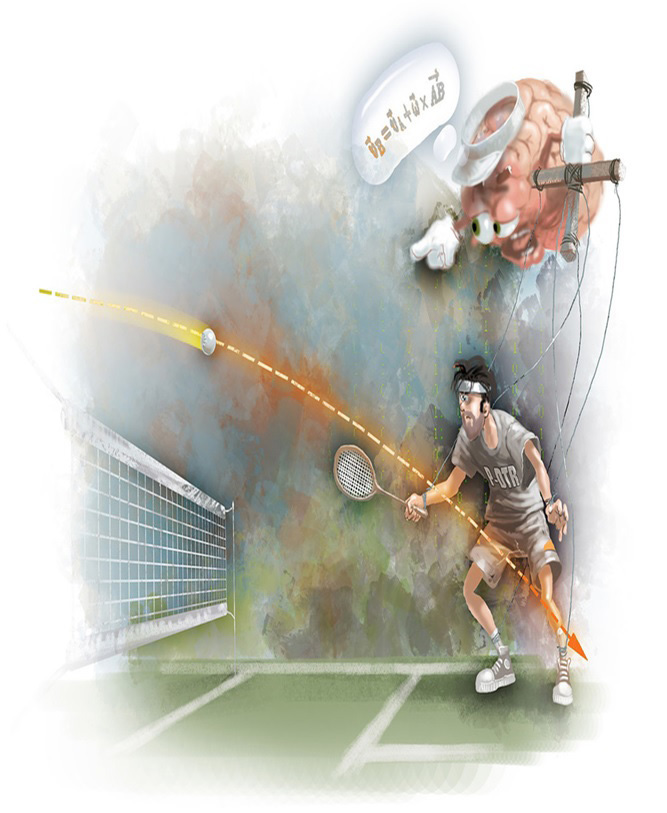 ials about the evolution of motor function and substantiated the need for the circular motion control scheme. According to the concept of circular control and sensory correction, when implementing a program of any movement, the assessment of the results of such is based on the analysis of information from sensory systems. If you deviate from this program, the movement program is corrected. This fact led N.A. Bernstein to the conclusion that, even while performing welllearned and often repeated movements, ways and means of solving the motor problem will be different due to the variability of external and internal conditions. The movement planning process is based on sensory information, whereas the process of implementing a movement task is based on sensory correction from the start of movement until its completion.
ials about the evolution of motor function and substantiated the need for the circular motion control scheme. According to the concept of circular control and sensory correction, when implementing a program of any movement, the assessment of the results of such is based on the analysis of information from sensory systems. If you deviate from this program, the movement program is corrected. This fact led N.A. Bernstein to the conclusion that, even while performing welllearned and often repeated movements, ways and means of solving the motor problem will be different due to the variability of external and internal conditions. The movement planning process is based on sensory information, whereas the process of implementing a movement task is based on sensory correction from the start of movement until its completion.
In 1960, Norbert Winner called this phenomenon “feedback”. While coordinating movements, the brain not only passively reacts to internal and external stimuli (signals), but also actively participates in the prediction and forecasting of the future based on the calculation of the motion likelihood. For instance, the tennis player’s brain predicts the trajectory of the ball’s direction and performs movements, trying to maximize accuracy to complete the task: to return the ball (Figure 2).
The brain knows in advance the purpose of any (both subconscious and conscious) movement.
According to N.A. Bernstein, movements are coordinated by the brain at different levels. All levels will function in a coordinated manner in a certain hierarchy to ensure the optimal performance of the set task. These levels include the spinal cord, medulla oblongata, lower centers, and cortex. N.A. Bernstein identified the following levels of motion synthesis:
Level A - muscle tone (example: a shiver from the cold)
Level B - synergy and coordination of muscle tension
Level C - non-objective movement in space (running)
Level D - the organization of sense-bearing actions with objects Level E - intellectual motor skills (speech, writing, etc.) (Figure 3).
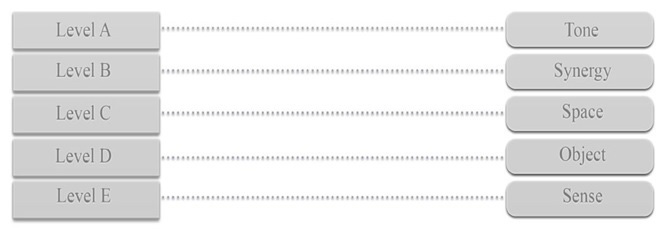
All the levels will work together in a cooperative manner, based on a task. Unconscious processes of movement are also controlled by the nervous system - breathing, talking, digestion, facial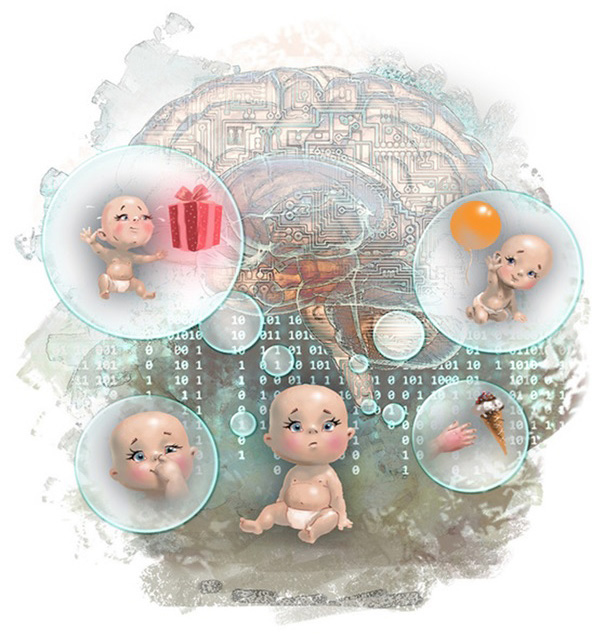 expressions, and hearing. This is also a kind of movement that is under the automatic control of the autonomic nervous system and it is controlled without our conscious intervention.
expressions, and hearing. This is also a kind of movement that is under the automatic control of the autonomic nervous system and it is controlled without our conscious intervention.
Conscious movements are motor programs that we have learned starting from birth in the course of our development and growth. Gripping, crawling, and walking - these are all brain-trained motor skills (Figure 4).
We do not think about how to take this or that object; we just reach and take what we want. Actually, this is the beginning of the motor program that works in an automatic mode and is stored in the motor memory of our brain. For example, in order to take an ordinary item from the table, the brain will roughly perform the following steps: the formation of the purpose, assessment of the distance to the item, the initial coordinates of the limb and its state, the approximate weight of the object, and the activation of a certain number of motor units. As the implementation progresses, the nervous system will check the correctness of the actions every second. It takes us a few seconds, but the brain does a huge job. Behind each of our movements there is a very complicated system of calculations that our nervous system is engaged in. Any movement is possible only if the brain receives the correct signals (this is very important!) from all of its systems: from the muscles, joints, ligaments, fasciae, internal organs, vision, hearing, and vestibular apparatus. This information is constantly updated.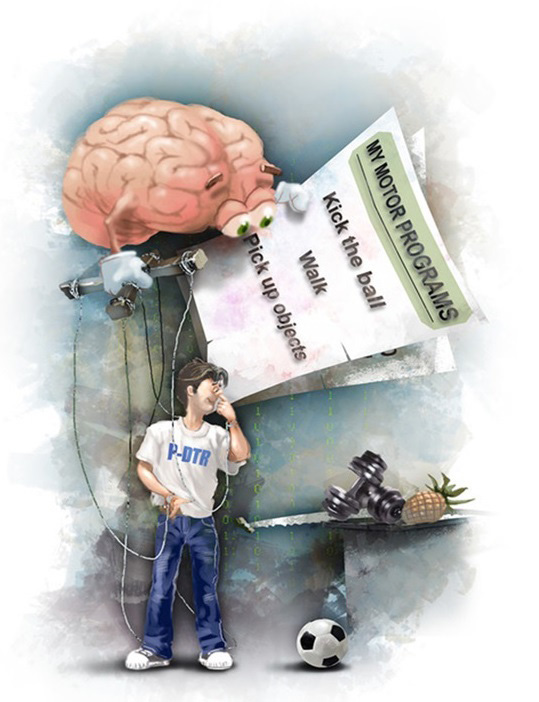 Of course, all of this happens without the participation of our consciousness. A process of learning any new movement happens with the participation of consciousness. Gradually, we learn the movements and the brain transfers a new motor program to the subconscious and it becomes automatic. Important! The brain learns all programs, even the wrong ones! (Figure 5).
Of course, all of this happens without the participation of our consciousness. A process of learning any new movement happens with the participation of consciousness. Gradually, we learn the movements and the brain transfers a new motor program to the subconscious and it becomes automatic. Important! The brain learns all programs, even the wrong ones! (Figure 5).
To make a movement, the brain needs to engage a certain group of muscles in a certain sequence. Any movement is performed by the muscles of agonists, antagonists, stabilizers, fixators, and neutralizers.
For example, for flexion of the elbow, the brachial muscle will be used, which starts the movement of the elbow joint bending. Muscles-synergists are the biceps and the brachial muscle. At the same time, square and round pronators neutralize the supination (the rotational movement of the limb outwards), which causes the bicep. Muscles of scapula, shoulder and sternoclavicular joint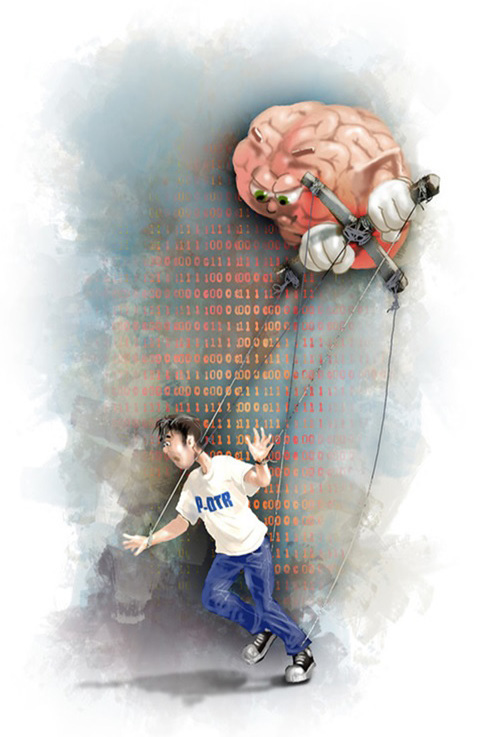 fix movement. Triceps and elbow muscles act as antagonists, helping to control movement. Stabilizers will be antigravitational muscles and muscles that stabilize the body. And this is only for a primitive movement of the elbow joint bending!
fix movement. Triceps and elbow muscles act as antagonists, helping to control movement. Stabilizers will be antigravitational muscles and muscles that stabilize the body. And this is only for a primitive movement of the elbow joint bending!
We do not stand! We are falling all the time. In a vertical position, we are constantly subjected to gravitational forces and are constantly forced to maintain balance in order not to fall. The brain constantly monitors the work of the anti-gravity muscles, adapting us to minute changes in the position of the body in space (Figure 6).
The brain has a sensory map, where the signals from all of the limbs are delivered, and using it (and also the data of other systems) the brain guides the body. We are used to seeing the movement of our arms and legs, and we consider it obvious that "we see how our limbs move". In fact, the visual system perceives the signal from certain receptors, and the image of limbs’ movement is coengineered by our brain. Seeing our body is a habit. The brain itself receives information from special sensors that are called receptors. Receptors are the sensors that recognize this or that modality of information (mechanical, electromagnetic, chemical, etc.) and code it into electrochemical signals understandable to the nervous system. On the basis of these data, the nervous system controls the entire organism and movements in particular.
The brain will respond in several ways to any signals from the external and internal environment of the body itself, one of which is the contraction and relaxation of the muscles, that is, the movement and motor response (Figure 7).
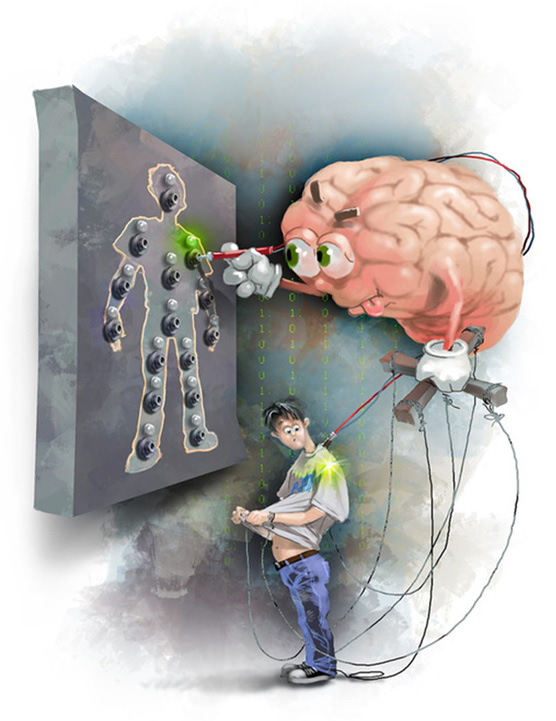 The rules of movements:
The rules of movements:
- The CNS constantly receives information from the external and internal environment and then interprets, processes, and analyzes the information and provides motor (muscle) or endocrine responses.
- Any movement is a consequence of the work of different levels of the CNS.
- The CNS starts, monitors, and corrects the movement.
- Most of our primitive movements are "built-in" or memorized motor programs that the brain starts automatically, without the control of consciousness.
- The CNS system is exploring new motor patterns involving consciousness.
- The CNS uses muscles to interact with the environment.
- The CNS constantly maintains the reciprocal balance of nerve impulses from and to muscles.
- The CNS works on the principle of "all or nothing," but the muscles work in the "on" and "off” mode.
- Subconscious automatic movements can be optimal and nonoptimal.
- Each movement is a certain sequence of work of a group of muscles.
- The CNS is supple and has the ability to perform movements in several ways.
- If parts of the body or distorted information are damaged from the sensors of the individual muscles, the CNS finds an alternative way of performing the movement, using compensatory mechanisms.
- With the depletion of compensatory mechanisms, the CNS cannot perform the intended movement and this can lead to pain.
Neurological muscular health. Non-optimal statics and dynamics. Motor maladjustment of the nervous system. Compensation
N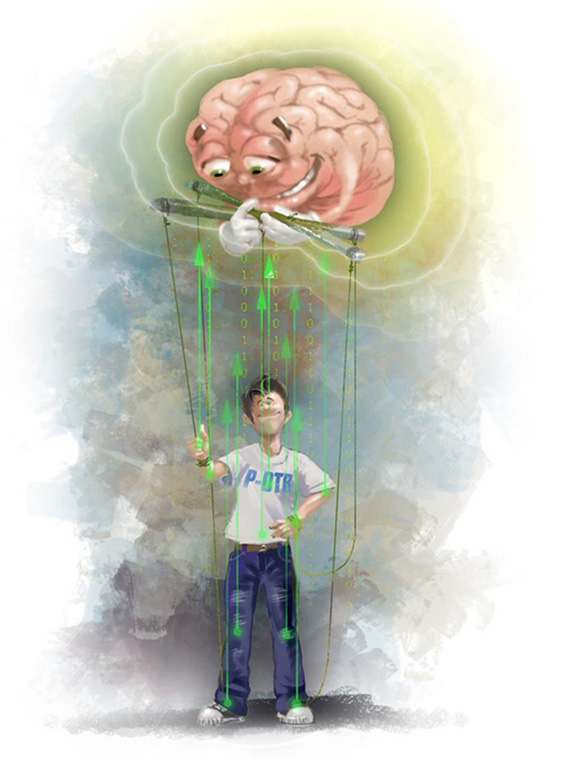 eurological muscle health implies a balanced functioning of all the body muscles. It is an adaptation of the nervous system to stress. From the point of view of adaptation of the nervous system, this means that it controls the flow of all incoming information from the sensors. It correctly interprets it and then provides an adequate response, that is, the optimal execution of the movement. The visual result of the balanced functioning of all muscles (joints, ligaments, fasciae) represented by the optimal statics (vertical posture meets all of the requirements of the correct statics) and optimal dynamics means the correct movements (Figure 8).
eurological muscle health implies a balanced functioning of all the body muscles. It is an adaptation of the nervous system to stress. From the point of view of adaptation of the nervous system, this means that it controls the flow of all incoming information from the sensors. It correctly interprets it and then provides an adequate response, that is, the optimal execution of the movement. The visual result of the balanced functioning of all muscles (joints, ligaments, fasciae) represented by the optimal statics (vertical posture meets all of the requirements of the correct statics) and optimal dynamics means the correct movements (Figure 8).
Neurological maladjustment may occur due to the inability of the CNS to process the incoming information flow and provide an adequate response; this leads to the emergence of compensatory mechanisms.
Causes of neurological maladjustment:
- Mechanical injury of the locomotor system
- Maladjustment of the receptor apparatus
- Injuries
- Emotional stress
- Viscera disease
- Sympathetic-parasympathetic regulation’s disorder
- Primitive motor programs’ activity - primitive reflexes
- Incorrectly learned motor patterns
- Wrong motor habits
- Passive lifestyle
- Piercings
- Tattoos
Any excess stimulus can lead to the maladjustment of certain systems and affect the muscles’ functioning. Functional maladjustment of the nervous system is expressed in the formation of pathological reflexes and the development of compensations.
The corresponding agonist will begin any movement (for example, the brachial muscle is an agonist of flexion of the elbow joint). If, for some reason, the agonist stops sending the right signal to the brain, the movement becomes suboptimal for energy costs. All of the CNS decisions are based on the information received from the detectors (receptors). If signals from a specific muscle receptor are weaker (hyposignal) or stronger (hypersignal), the CNS will regard it as a danger and will try to compensate. This does not happen on a conscious level and should not be on a conscious level. Most of the primitive movements are regulated at the spinal level. Once the CNS receives the "changed" information, it adapts the entire body to it. In a sense, the central nervous system is "blind" and has no idea of arms and legs. All it really has is a constant flow of millions of signals, and it controls the body according to these signals.
In our example, the shoulder muscle receptors send another "high" signal. By the CNS it is regarded as a message that the muscle cannot perform its function properly, and this will affect the performance of the entire movement. The CNS will try to solve the problem and involve any existing synergic muscle in the task. To carry out the movement, the biceps will replace the brachial muscle. The biceps have their own tasks and, in addition to flexion, the biceps must supinate the forearm and lower the humerus. However, since the bicep now becomes the primary flexor of the shoulder joint, it will compensate for the operation of the shoulder muscle and, at the same time, will perform its immediate functions. This will affect the stability of the shoulder joint, and the correct sequence of other movements, such as the flexion and abduction of the shoulder. If the bicep does not perform the necessary lowering of the shoulder, it will lead to a shoulder injury, the tendon of the supraspinatus will be mechanically compressed, and inflammation will result. This example shows that the dysfunction in one muscle can lead to the maladaptation of the entire muscular system and then visceral. 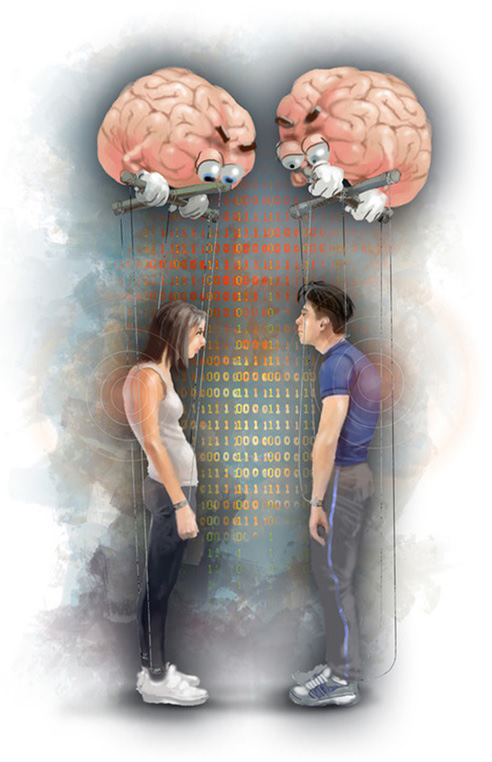
Practicing sports with functional maladjustment. The purpose and objectives of fitness. System errors when performing movements
In the conditions of modern life, the vast majority of people have irregularities in statics and dynamics. In other words, we stand wrong, we walk wrong, and we perform various movements wrong (Figure 9).
One of the main causes of disorders is a sedentary lifestyle and lack of active movements. The human body was created for movements, our ancestors walked without shoes. There was no hard surface, no heels, and they had to overcome various obstacles using different groups of muscles. Nowadays, not many movements are required, which leads to the gradual atrophy and dysfunction of the locomotor system. The years spent by a child in school and the workload on one side lead to detrimental consequences for the physical body. Anyway, most of us have a part of the muscles in the functional weakness and the other part is overloaded due to its compensatory functions. As time passes, if a person does nothing, the compensatory possibilities become depleted, some painful sensations appear, and the range of motion decreases. In this very condition, we often go to the gym.
99 percent of us, when we start exercising, have suboptimal statics and dynamics. Some of our muscles are considered "weak" (reduced activity), as they are not included in the optimal sequence of motion, and some are "overloaded" due to the performance of compensatory functions. What happens if we put the main load on the original weak muscles? We increase compensation at the expense of all of the other systems and it will potentially lead to injury, pain, non-optimal sequences of motion, and other various pathological processes.
The main goal of fitness is to be healthy, good looking as well as have a beautiful body, be strong and flexible, be full of energy, and be able to adapt to the various loads.
We also train in order to recover from injuries, achieve better results, and prevent common pathologies of the locomotor system. It is widely known that the ability of people to move correctly affects our ability to think clearly and form a positive attitude of ourselves and the world around us. This idea is correct, but why is it that sometimes after exercise we feel worse and experience pain, and why do we sometimes get tired of training? Why are we unable to do certain exercises? The answer is that our nervous system is not prepared for the optimal load, we stress and deplete the compensatory structures that our brain created to balance the existing dysfunctions. As a result, weak links become even weaker, and the compensatory mechanisms exhaust their capabilities and we experience all sorts of negative symptoms.
System errors in fitness classes
- If the muscle is not included in the optimal sequence of the motor act - it is useless to “pump” it. The brain will perform the assigned task by any available means, until its compensatory possibilities are over. The fact that we do not feel pain yet does not mean that all of our movements are optimal. It means that we still have enough compensatory reserves.
- “Pumping" the problematic areas. For example, with pain in the knee, some athletes want to "pump" the straight muscle of the thigh. Any movement is the work of a group of muscles. The cause of pain in the knee may be different; by pumping this or that muscle we only increase the dysbalance, which can later affect other areas, e.g. shin pain.
- Multiple repetitions of exercises. With minimal neurological dysfunction, the muscle is able to perform 3 contractions at most, then it becomes hyporeflective and is not included in the work, causing the compensatory phenomena described hereinabove.
- Work with one chosen muscle or “pumping the biceps". One muscle alone cannot make movements. Any movement of the limbs is achieved due to stabilization in the first place. When you work with the biceps, well-coordinated working of the muscle group is necessary: stabilizers, fixatives, neutralizers of the agonist and antagonist. Movement is the sequence. If performing the exercise with weight, the muscles of our wrists are not able to handle the load, all of the following exercises are not only useless, but also harmful.
- Each performed exercise must be controlled and focused on. A person engaged in exercise should have basic knowledge about the structure of their nervous system, the work of their own muscles, and the quality of the performance of a particular movement. Properly learned and conscious movement goes to the level of automaticity and is running optimally. Incorrect performance of the exercise will also be "learned" by the brain and will lead to suboptimal motor patterns.
- "The muscle becomes strong at a certain load." One muscle does not become strong by itself. Each movement can be considered as a muscle chain where muscles, ligaments, joints, fascia, and other parts participate. The optimal functioning of the motor chain is achieved by the work of the muscle groups listed hereinabove, provided that they are all activated at the same time.
- "Today, we pump arms", "tomorrow, we pump the abdominals". Your body is a house. Your arms and legs are the doors and windows that make movements due to the stability of the house. It is useless to "pump" your legs if you are not including the muscles of the body. Every movement is made due to stabilization.
Optimal training. Normotonic muscles. Conscious realization of movements
For optimal fitness training, two components are necessary. They are neurological health and knowledge of how to perform an exercise properly. Exercise that causes pain is dangerous and traumatic for the body.
RULES of optimal training
- All muscles should be in a normal tone (be ready to perform an exercise, turn on and off in a specific neurological sequence). Anti-gravity muscles should work optimally when running.
- The number of repetitions is any stimulus that is repeated by specific muscles many times (over 20). It inhibits muscle (e.g. stretching or contraction is a stimulus). Muscle with basic
dysfunction loses its stretching reflex after three contractions and all subsequent exercises are performed with compensation. - Muscles work only by interacting with the joints that they cross. For example, some people flex their hips when doing exercises for the abdominals. This is wrong, because the rectus abdominis does not cross the thigh, and instead of it we train the main hip flexor - the large lumbar muscle.
- Any ligament affects the muscles associated with it. Stretching the ligaments of the foot causes the inhibition of the corresponding muscles and affects the movement. Therefore,
performing each exercise, the position of the body must be taken into account. - Peripheral flexors facilitate proximal flexors. This means that when we train the biceps and bend/unbend the wrist, we activate the biceps and this is a typical compensatory
technique/trick of the brain. - Stabilization is the basis for performing any exercises (especially with weight).
- Performing all exercises, the correct breathing should be observed (for example, when "pumping" the abdominals, it is necessary to inhale in an initial position and then exhale at
ascents). The straight muscle of the abdomen is the muscle of the exhalation, and on inhalation it becomes weak. - Any exercise should be controlled and done consciously.
The fitness trainer’s work and objectives
What do we usually encounter in gyms? Observing a mistake in performing the movement, most trainers will tell you that you are doing the exercise incorrectly and ask you to bend your back or hold your knees, or turn your feet differently. As a result, the client will complain about the failure since, in new position, they will feel uncomfortable and cannot perform the movement. Then, the trainer will say ok, you need to make the specific muscles "stronger" and ask you to do additional exercises. What's happening? We can perform the movement because we already use compensatory patterns, and that means our system works poorly at the initial stage. What does the trainer do when asking you to change the position? They ask you to stop using compensation, and this automatically creates a conflict in the central nervous system. Because of many reasons, it simply cannot use the required position. The CNS selects the available pattern. What will the result be? In the best-case scenario, the nervous system will cope and build a new compensation, and in the worst, is there will be a risk of injury.
Example: The client does some squats. During the squats, their right foot is turned outward, the pelvis is tilted, and the stomach at the moment of the squat is bulging. The client does this unconsciously because their CNS thinks that this is the best way to accomplish the task. The client’s rectus abdominis muscle doesn’t work, the oblique abdominal muscle doesn’t work, and the anterior fibular muscle doesn’t work (for example).
There are two options that can be used by the trainer. Insist on "retraining" and ask the client to consciously include nonworking muscles.
Stop and think about why in this particular case the CNS chooses this pattern for exercising. Why does the client’s central nervous system do exactly this kind of movement?
The body chooses this way unconsciously. If we begin to adjust it consciously, will it be of any use? Maybe yes, maybe not. We cannot be sure until we run the test.
Optimal training procedures
- To analyze the client’s static and dynamic capabilities, to define their compensatory patterns, and to identify the hyporeflective muscles.
- To run a muscle testing.
- In the case of finding a dysfunction, it is necessary to use certain techniques in order to eliminate it.
- To teach the CNS to carry out the movement correctly.
- To teach and explain to the client the basic functioning of the way their nervous system works.
References
- Bernstein NA. On the Motion Synthesis. Moscow. 1947.
- Bernstein NA. General Biomechanics. Fundamentals of the Human Movement Science. Moscow. 1926.
- Bernstein NA. Essays on Movement and Activity Physiology. Moscow. 1966.
- Bernstein NA. Essays on Movement and Activity Physiology. Moscow. 1966.
- Zatsiorsky VM, Arutin AS, Seluyanov VN. Biomechanics of the Human Motor Apparatus. Moscow Physical Culture and Sport Fisicheskaya Kultura and Sports. 1981; 143.
- Korenbert VB. Fundamentals of the Qualitative Biomechanical Analysis. Moscow Physical Culture and Sport. 1979; 208.
- Norbert Winner. I Am Mathematician. Moscow Science Nauka. 1967; 353.
- Chkhaidze LV. On the Human Movement Control. Moscow Physical Culture and Sport. 1970; 28-103.
© 2018 Palomar J & Svet M. This article is distributed under the terms of the Creative Commons Attribution 4.0 International License
Download the article (PDF, 1 MB only)